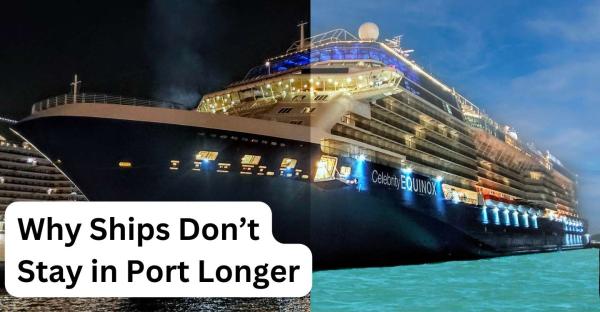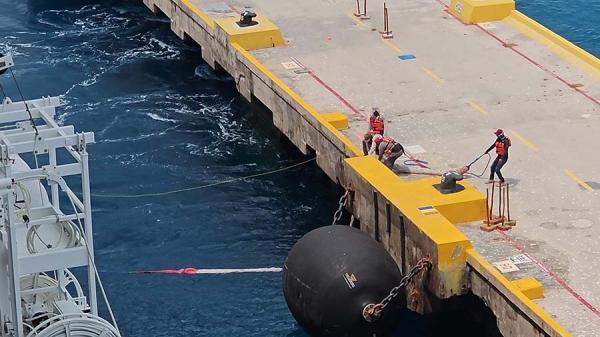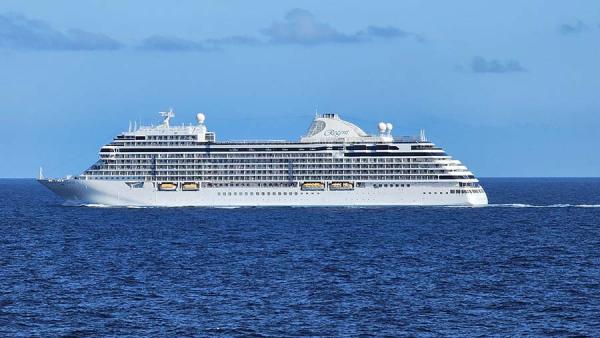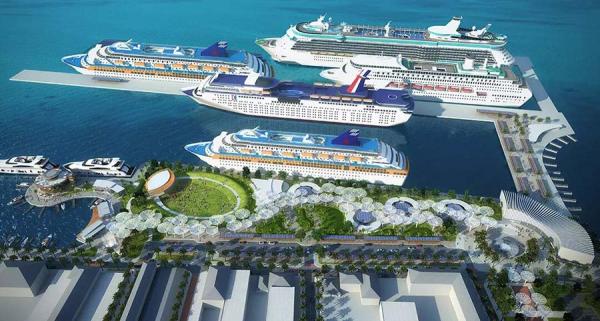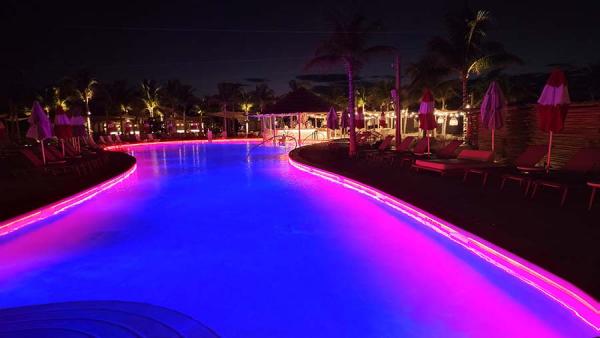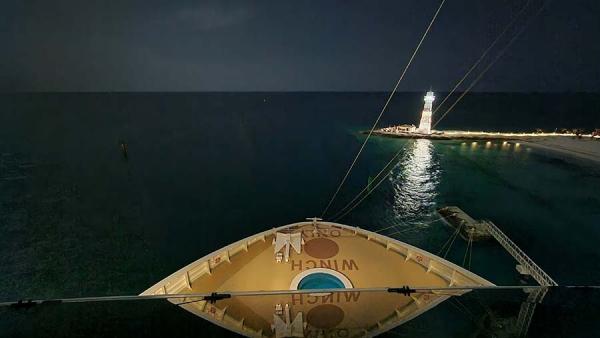Modern cruising offers seemingly endless amenities and entertainment onboard ships, but the destinations ships sail to are another reason that guests choose this type of vacation. Seeing new places and experiencing local cultures is a wonderful part of cruising, leading many to wonder, “Why don’t cruise ship stay in port longer?” Like many matters, it comes down to multiple factors, and we’re going to discuss several of the reasons that cruise ships don’t stay in port longer hours. Spoiler alert, it often comes down to money.
Port Services for Cruise Ships
If you park your car alongside a pretty overlook it doesn’t cost anything - but it also doesn’t take teams of longshoremen and security officials to park your car. Different ports have different types of agreements with each cruise line, but broadly speaking the longer a ship stays in port (and the larger that ship is), the more money the cruise line has to pay. Many, though not all of these costs get passed along to cruisers as “port fees and taxes.” The money pays the professionals that physically help tie up the ship, the security personnel controlling the flow of traffic on and off the ship (as well as into and out of the country), engineers who work on water, sewage, and power systems, and more.
If you want to get an idea of how much this costs, and how they’re calculated at some common ports, we’ve got just the article for you: How Much Does It Cost to Dock a Cruise Ship?
Cruise Ship Fuel Consumption
It probably won’t surprise you to learn that one of the biggest expenses for cruise ships is fuel. It’s not just a matter of the fuel it takes to move the ship and all the people on it, but the fuel that it takes to generate electricity for everything a small city needs.
The more slowly a ship can make its way to the next port of call, the less fuel it will use in the process. This means that unless the next port is very close by, the longer a ship stays in port, the more fuel that will be burned heading to the next stop, and the more money the line spends operating that sailing.
Onboard Revenue Happens at Sea
If you’re sailing on a contemporary or premium cruise line (you can learn about the different segments here), a fairly large portion of what you’ll shell out to the cruise line happens after you book and pay for your cruise. Some of that is specialty dining and drinks, but these lines also make a lot of money in the retail shops and in the casinos. If you’ve ever tried to shop for jewelry or play slots while in port, you’ve noticed that stores and casinos aren’t open.
A cruise ship visiting a port is bringing guests that the port hopes spend money on shore, so they don’t want to compete with shopping and gaming opportunities on the ship. Generally, for this reason, ships are prohibited from operating certain services while in port. Further, complications with local gaming laws and taxes in each port make operating these logistically challenging, at very least. There are some exceptions that have been worked out - mostly certain cruise line private destinations. The result of these restrictions is that cruise lines have significant financial incentive to be at sea, where guests can spend their money with the cruise line. In fact, many lines will even put spirit tastings, slot tournaments, and other events on the schedule shortly after departing, to draw guests back after enjoying a day ashore.
Non-Cost Related Reasons Cruise Ships Don’t Stay in Port Longer
In addition to the cost of port services, extra fuel, and the loss of onboard revenue, there are other considerations that cruise lines make when setting up a port schedule. For example, some ports have environmental laws that limit how many hours in total cruise ships are allowed to run their engines in port. If the port (or ship) doesn’t support cold ironing (read about what that is here), this may require an early departure. In fact on a recent Alaska cruise, we had just a couple hours in Victoria, BC for this very reason (watch that vlog here). Other factors include commitments lines may have to other ports they may need to hurry to. This happens sometimes when a port city agrees to infrastructure, security, or other improvements, but only if cruise lines promise to bring a certain number of guests in port for a minimum amount of time.
Perhaps the ultimate non-cost related reason not to stay in port late is guest demand. While many guests (myself included) think it’d be interesting to stay late in some ports, the majority of guests are looking for daytime activities, and find themselves ready to relax onboard after a full day of touring. I’ve seen this myself on calls to popular ports such as Cozumel and St Thomas, where we stayed in port late, but where very few guests stayed ashore once it started to get dark. Similarly, while staying late at Virgin Voyage's Bimini Beach Club we found ourselves all alone.
Maybe guests didn’t feel there was enough to do, or maybe the cruise felt advertising these later stays would make the itinerary sound more appealing. There are other factors too, such as maintenance schedules, and ensuring that super-exclusive CruiseHabit Sailaway Meets happen on time during our group cruises. You *do* sail with us, right? Is that all, however?
So We Shouldn’t Expect Longer Port Stays?
In the Caribbean, at least, it would likely take a concerted effort by businesses and governments to make most cruise ports appealing at night for guests. Challenges might include offering more after-hours transportation options, extended hours for more restaurants, bars and shops, and overcoming potential guest safety concerns. In some populous cities already known for their nightlife, such as San Juan, some cruise line itineraries do include stays into the evening. However, it would seem unlikely that “made for cruiser” destinations such as Costa Maya would make the significant changes necessary to encourage lines to keep their ships there later since these ports draw cruisers in based on the natural beauty most easily enjoyed by daylight.
While MSC sometimes stays late or overnight at their private destination of Ocean Cay, they have arrangements to continue some onboard operations during this time, and guests aren’t permitted out overnight. Premier Cruises tried late nights with their private island, Treasure Island, in the 80s and 90s, but found that guests preferred to remain onboard. Given these challenges, and the cruise industry’s continuing (and successful) efforts to add features and amenities that make their ships remarkable destinations in and of themselves, it doesn’t seem likely that we’ll see longer stays as a popular option - at least in the Caribbean.


